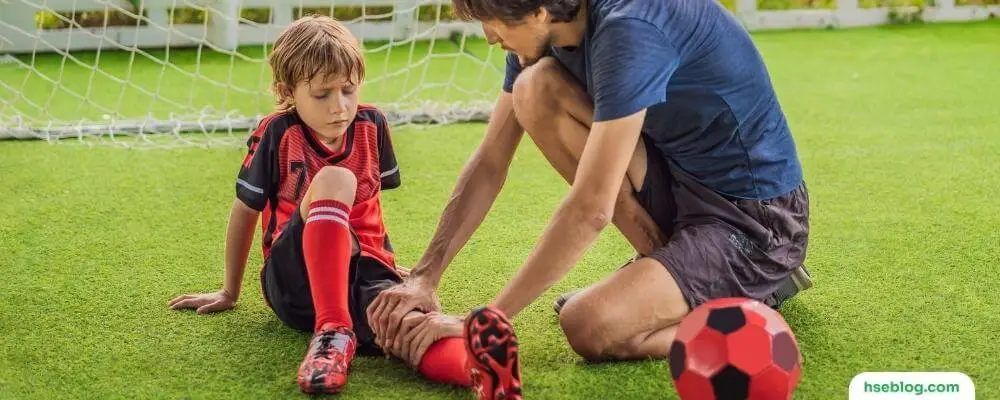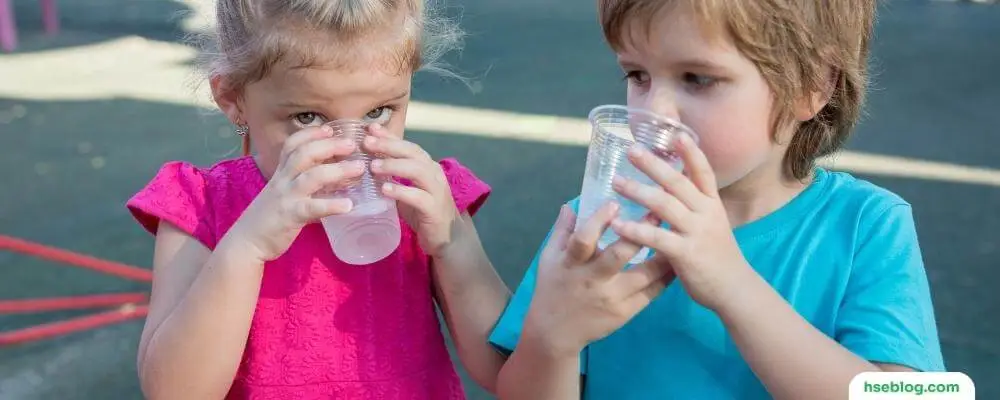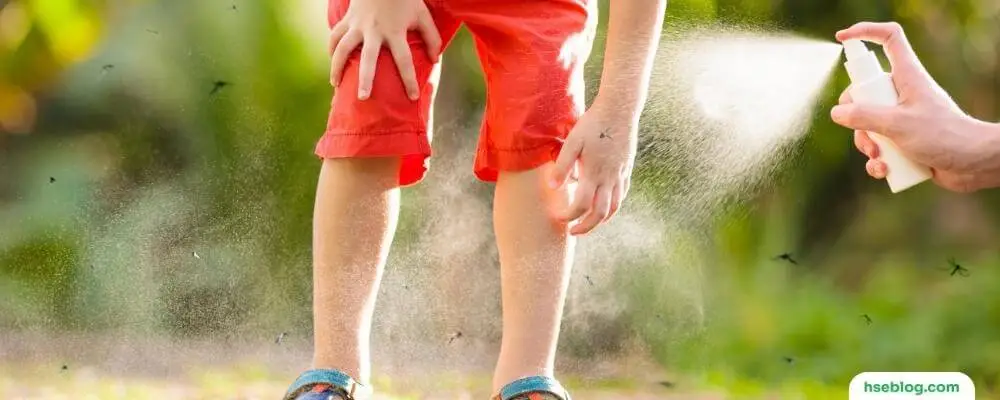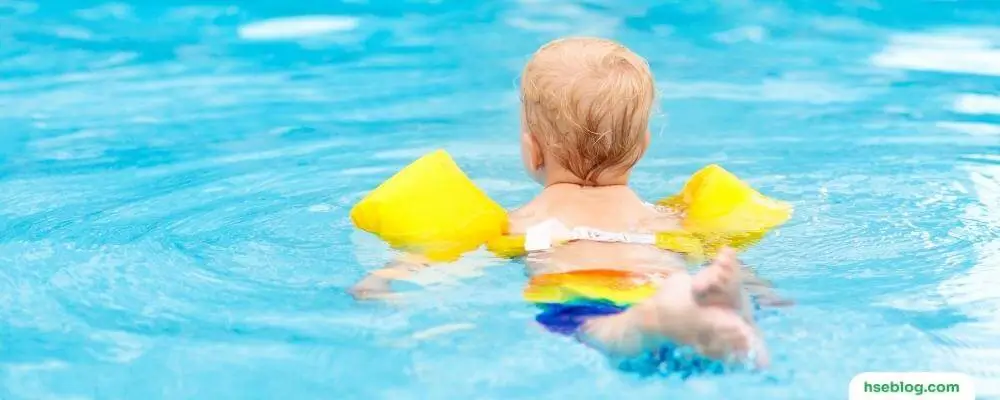Summer is a season full of fun and adventure for kids, but it also poses some risks when it comes to injuries. As the temperatures rise and children engage in outdoor activities, they become vulnerable to a variety of injuries that can put a damper on their summer experience. As a parent or caregiver, it is essential to be aware of these common summer injuries and take necessary precautions to prevent them.
In this blog, we will discuss five common summer injuries that kids are susceptible to and provide tips on how to prevent them. From sunburns to insect bites to water-related injuries, we will cover all the bases so that you can keep your little ones safe and happy during the summer months. So, let’s dive in and learn how to have a safe and enjoyable summer with our kids.
The Importance of Summer Safety for Kids
Summer is a time for fun, sun, and outdoor activities. It’s a season that kids eagerly anticipate, with endless opportunities for play and exploration. However, the warm weather and outdoor adventures also come with risks, making summer safety for kids a top priority for parents and caregivers. Ensuring children’s safety during this time can help them enjoy a memorable and accident-free summer. Here are some key aspects of summer safety that are important to consider:
- Sun protection: Prolonged exposure to the sun’s harmful ultraviolet (UV) rays can lead to sunburn, premature aging, and an increased risk of skin cancer. To protect your children, encourage them to wear wide-brimmed hats, sunglasses with UV protection, and sunscreen with an SPF of 30 or higher. Make sure they reapply sunscreen every two hours, especially after swimming or sweating.
- Water safety: Drowning is a leading cause of accidental death among young children. Supervise children closely when they are near water, whether at the pool, beach, or lake. Encourage swimming lessons and ensure that life jackets are worn when appropriate. It’s also important to learn CPR, as this knowledge can be lifesaving in case of an emergency.
- Heat-related illness prevention: Children are more susceptible to heat-related illnesses, such as heatstroke and dehydration. Encourage them to drink plenty of water and avoid excessive physical activity during peak heat hours. Make sure they take breaks in the shade or indoors and wear lightweight, breathable clothing.
- Insect protection: Insect bites can be painful and, in some cases, transmit diseases. Use insect repellents with DEET or picaridin to keep mosquitoes and ticks at bay. Also, avoid areas with tall grass and standing water, as these are breeding grounds for insects.
- Playground safety: Ensure that the playground equipment your child uses is age-appropriate and well-maintained. Supervise children while they play, and teach them about safe playground behavior, such as not pushing or shoving others.
- Bicycle safety: Riding a bike is a popular summer activity, but it can also be dangerous if proper precautions aren’t taken. Make sure your child wears a properly fitted helmet and understands traffic rules and hand signals. Encourage them to ride on bike paths and sidewalks when possible.
- Food safety: Warm temperatures can cause foodborne illnesses to spread more easily. Teach your child about proper food handling, such as washing hands before eating and avoiding cross-contamination. Keep perishable foods chilled and discard anything that has been left out for too long.
- Supervision and communication: Establish clear boundaries and rules for your child, and maintain open lines of communication about their whereabouts and activities. Encourage them to check in regularly and to report any unsafe situations they encounter.
By focusing on these essential aspects of summer safety, parents and caregivers can help ensure that children have a fun and safe summer experience. With the right precautions in place, kids can fully enjoy the freedom and excitement that the summer months have to offer.
Common Summer Injuries For Kids And How To Prevent Them
Summer is a time for outdoor fun, but with it comes an increased risk of injuries. Here are five common summer injuries that can occur among children and simple steps to help prevent them:

1. Playground Injuries
Playgrounds are a popular spot for children during the summer months, providing endless hours of fun and exercise. However, they can also be a common source of injuries if proper safety measures are not taken. Here are some steps you can take to prevent playground injuries in your kids.
- Choose age-appropriate playground equipment: Ensure that the equipment your child uses is appropriate for their age and skill level. Many playgrounds have separate areas designed for different age groups, so pay attention to the posted signs.
- Check for proper maintenance: Regularly inspect playground equipment for any signs of wear and tear or damage, such as rust, broken parts, or loose bolts. Report any issues to the appropriate authorities or the playground owner.
- Supervise your child: Always keep an eye on your child while they are playing. Encourage them to use the equipment correctly and ensure they are not engaging in risky behavior, like pushing, shoving, or jumping off equipment from unsafe heights.
- Teach your child about playground safety: Educate your child about the importance of using playground equipment safely, waiting their turn, and respecting others. Encourage them to follow the playground rules and report any dangerous situations to you or another responsible adult.
- Dress appropriately: Ensure your child wears clothing that is suitable for play and won’t get caught in the equipment. Avoid loose-fitting clothes, scarves, and necklaces. Closed-toe shoes with non-slip soles are recommended to provide adequate traction and protection.
- Use protective gear: For certain activities, such as skateboarding or cycling, make sure your child wears appropriate protective gear, including helmets, knee pads, and elbow pads.
By following these tips, you can help minimize the risk of playground injuries and ensure your child has a safe and enjoyable summer.

2. Dehydration and Heat Exhaustion
During the hot summer months, children are at a higher risk of experiencing dehydration and heat exhaustion, especially when they’re engaging in outdoor activities. These conditions can lead to serious health complications if not addressed promptly. Here are some steps to prevent dehydration and heat exhaustion in your kids:
- Encourage regular hydration: Teach your child to drink water regularly, even if they don’t feel thirsty. Provide a water bottle for them to carry around, especially during outdoor activities. Aim for at least 8 ounces of water every 1-2 hours, and increase the amount if they are participating in physical activities.
- Avoid sugary and caffeinated beverages: Sugary drinks like soda can actually contribute to dehydration, while caffeinated beverages can lead to increased water loss. Encourage your child to stick to water, or consider offering flavored electrolyte drinks for added hydration during sports or other high-energy activities.
- Dress in light, breathable clothing: Choose light-colored, loose-fitting, and breathable fabrics for your child’s summer wardrobe. This will help keep their body temperature down and allow for better air circulation.
- Seek shade and take breaks: Encourage your child to take breaks in shaded areas during outdoor activities, especially during peak sun hours (10 a.m. to 4 p.m.). Allow them to rest and cool down before continuing their play.
- Recognize the signs of dehydration and heat exhaustion: Teach your child to recognize the signs of dehydration (dry mouth, dizziness, headache, and dark-colored urine) and heat exhaustion (fatigue, nausea, excessive sweating, and pale or clammy skin). Encourage them to notify you or another responsible adult if they experience any of these symptoms.
- Use cooling methods: Provide cooling aids like fans, misting bottles, or cool wet towels to help lower your child’s body temperature when needed.
By following these preventive measures, you can help your child stay safe and healthy during the hot summer months while avoiding the risks of dehydration and heat exhaustion.

3. Insect Bites and Stings
Insects like mosquitoes, ticks, and bees are more active during the summer months, increasing the chances of children experiencing bites and stings. These can cause discomfort, allergic reactions, and in some cases, transmit diseases. Here’s how to prevent insect bites and stings in your kids:
- Apply insect repellent: Use an EPA-registered insect repellent containing DEET, picaridin, or other recommended active ingredients on your child’s exposed skin. Follow the product’s label instructions for proper application and reapply as needed. Avoid using repellent on children younger than two months old.
- Dress appropriately: Have your child wear long-sleeved shirts, long pants, and closed-toe shoes when playing outdoors, especially in wooded areas or near stagnant water where insects are more prevalent. Tuck their pant legs into socks to provide an extra barrier against ticks.
- Use protective barriers: Install mosquito nets or screens on windows and doors at home to prevent insects from entering. When camping, use a bug-proof tent and consider treating the tent and sleeping gear with permethrin for additional protection.
- Avoid strong scents: Insects may be attracted to strong scents from perfumes, soaps, and lotions. Opt for unscented personal care products for your child during the summer months.
- Educate your child: Teach your child to avoid disturbing insect nests or hives and to steer clear of areas where insects congregate, like stagnant water or flowering plants.
- Perform tick checks: After spending time outdoors, inspect your child’s body for ticks, paying special attention to the scalp, neck, armpits, and behind the knees. Remove any ticks promptly and safely using tweezers.
By taking these precautions, you can reduce the likelihood of insect bites and stings, ensuring your child enjoys a more comfortable and safer summer.

4. Water-related Injuries (Drowning and Waterborne Illnesses)
Swimming and water activities are a popular way for children to cool off and have fun during the summer. However, these activities also come with risks, including drowning and waterborne illnesses. Here’s how to prevent water-related injuries and understand the associated risks:
- Enroll your child in swimming lessons: Ensure your child is comfortable and skilled in the water by enrolling them in age-appropriate swimming lessons. This will teach them essential water safety skills and reduce the risk of drowning.
- Supervise your child at all times: Always keep a close eye on your child when they are in or near water, regardless of their swimming abilities. Designate a responsible adult as the “water watcher” and avoid distractions like cell phones or conversations.
- Use appropriate flotation devices: Equip your child with a properly fitting, Coast Guard-approved life jacket when participating in water activities or when swimming in open water. Avoid using air-filled or foam toys, as they are not designed to keep your child safe in the water.
- Teach your child about water safety: Educate your child on the dangers of diving into shallow or unknown water, running near the pool, and swimming without adult supervision. Encourage them to always swim with a buddy and to follow posted safety rules.
- Choose safe swimming locations: Select well-maintained swimming facilities with lifeguards on duty. Avoid swimming in contaminated water or areas with strong currents, rip tides, or heavy boat traffic.
- Maintain proper pool hygiene: To prevent waterborne illnesses, teach your child not to swallow pool water and to take regular bathroom breaks. Ensure your home pool is properly maintained, with the correct balance of chemicals to keep the water clean and safe.
- Be aware of water temperature: Cold water can pose a risk of hypothermia, even during the summer months. Ensure your child wears appropriate protective gear, such as a wetsuit, when swimming in colder water.
By taking these preventive measures and being aware of the risks associated with swimming and water activities, you can help ensure your child has a safe and enjoyable summer in and around the water.

5. Sunburn
Prolonged exposure to the sun’s harmful ultraviolet (UV) rays can cause sunburn, which not only results in discomfort and pain but also increases the risk of skin cancer later in life. Here are some steps to prevent sunburn in your kids:
- Apply sunscreen: Use a broad-spectrum sunscreen with an SPF of 30 or higher on your child’s exposed skin. Apply it at least 15-30 minutes before sun exposure and reapply every two hours, or more frequently if they are swimming or sweating.
- Seek shade: Encourage your child to play in shaded areas or under umbrellas, especially during peak sun hours (10 a.m. to 4 p.m.) when the sun’s rays are the strongest.
- Dress appropriately: Dress your child in lightweight, light-colored clothing made of tightly woven fabric that can provide some protection against the sun. Opt for long-sleeved shirts and long pants when possible.
- Wear protective accessories: Equip your child with a wide-brimmed hat to shield their face, neck, and ears, and sunglasses with 100% UVA and UVB protection to protect their eyes.
- Teach sun safety habits: Educate your child about the importance of sun protection and the risks of sunburn. Encourage them to seek shade, wear protective clothing, and apply sunscreen regularly.
- Monitor sun exposure: Keep track of how long your child is in the sun and be mindful of their skin’s reaction. If you notice any redness or signs of sunburn, remove them from direct sunlight immediately and take appropriate steps to soothe and treat the affected area.
By following these sun safety tips, you can protect your child’s skin from the damaging effects of the sun and ensure they have a fun and healthy summer.
Conclusion
Summertime brings an abundance of excitement, fun, and opportunities for children to explore the great outdoors. However, it also comes with an increased risk of certain injuries. By being aware of the five common summer injuries for kids—drowning, heat-related illnesses, playground injuries, bike accidents, and insect bites and stings—we can take the necessary precautions to ensure a safe and enjoyable season for our little ones.
Prevention is key; hence, fostering a culture of safety by teaching children about potential hazards, encouraging the use of protective gear, and providing adequate supervision can significantly reduce the chances of injury. Additionally, staying informed about weather conditions, familiarizing yourself with local flora and fauna, and maintaining a well-stocked first aid kit can also contribute to a safer summer experience for everyone involved.
As parents, guardians, and caregivers, it is our responsibility to create a nurturing environment that allows children to enjoy the best that summer has to offer, while minimizing the risks associated with outdoor activities. By doing so, we can help our kids create cherished memories of fun-filled, adventure-packed, and, most importantly, safe summer vacations.

